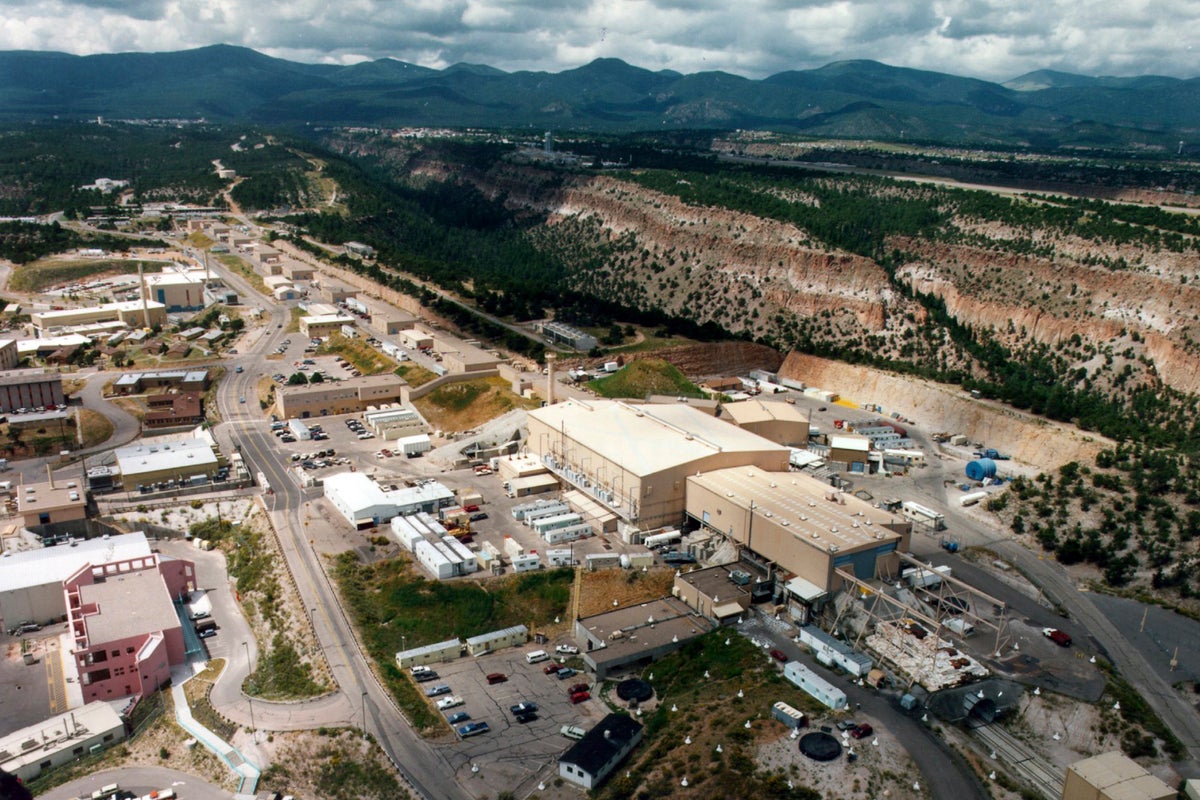
The U.S. agency in charge of producing key components for the nation’s nuclear arsenal has cleared the way for new equipment to be installed at a New Mexico laboratory as part of a multibillion-dollar mission, but nuclear watchdog groups say the project already is behind schedule and budgets have ballooned.
Approval for moving equipment into place at Los Alamos National Laboratory was first outlined in an internal memo issued by the deputy secretary of energy in January. The National Nuclear Security Administration, which is overseen by the U.S. Department of Energy, made a public announcement Thursday.
The work will include the design, fabrication and installation of gloveboxes and other special equipment needed to make the plutonium cores. The work will be split between Los Alamos in northern New Mexico and the Savannah River Site in South Carolina, with the locations facing a congressional mandate to make at least 80 of the cores each year by 2030.
The deadline for meeting that capacity has been pushed back, with the memo being the latest evidence that the minimum equipment necessary will be in place at Los Alamos by August 2030, or four years later than expected.
The nuclear agency contends that installation of the equipment isn't necessary for Los Alamos to produce 30 pits per year, and that the lab will be building war reserve pits using existing equipment as the project proceeds.
Agency spokeswoman Shayela Hassan said in an email to The Associated Press that the NNSA expects an increasing number of pits to be produced each subsequent year until the new equipment is installed. She said that's when the capability will be in place to produce 30 pits each year “with moderate confidence.”
The long-shuttered Rocky Flats Plant outside Denver was capable of producing more than 1,000 war reserve pits annually before work stopped in 1989 due to environmental and regulatory concerns. In 1996, the DOE provided for limited production capacity at Los Alamos, which produced its first war reserve pit in 2007. The lab stopped operations in 2012 after producing what was needed at the time.
Greg Mello, director of the watchdog Los Alamos Study Group, said the NNSA has made contradictory statements about the delays and what they mean for the overall plutonium pit project. He pointed to NNSA statements in 2017 and 2018 in which the agency predicted problems if it were producing pits while also replacing gloveboxes and other equipment at the same time.
“There is more they aren't saying,” Mello said. “We believe NNSA and LANL will struggle mightily, with further setbacks, failures and accidents in a misguided attempt to produce any meaningful number of pits in that cramped, aging facility."
The memo provides formal cost and schedule estimates for getting equipment in place at Los Alamos, but it's unclear when construction will begin. The cost has been pegged at roughly $1.85 billion.
More details about spending and schedules are expected when the NNSA submits its budget request to Congress next month.
In January, the Government Accountability Office said in a report that NNSA plans for reestablishing plutonium pit production do not follow best practices and run the risk of delays and cost overruns.
The GAO described the modernization effort as the agency’s largest investment in weapons production infrastructure to date, noting that plutonium is a dangerous material and making the weapon cores is difficult and time consuming.







